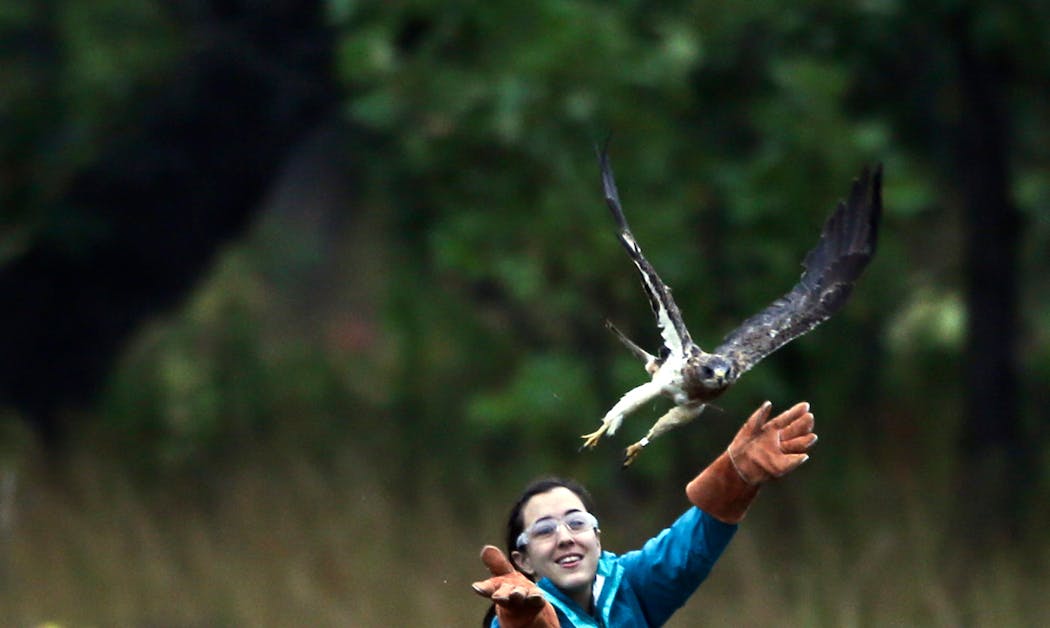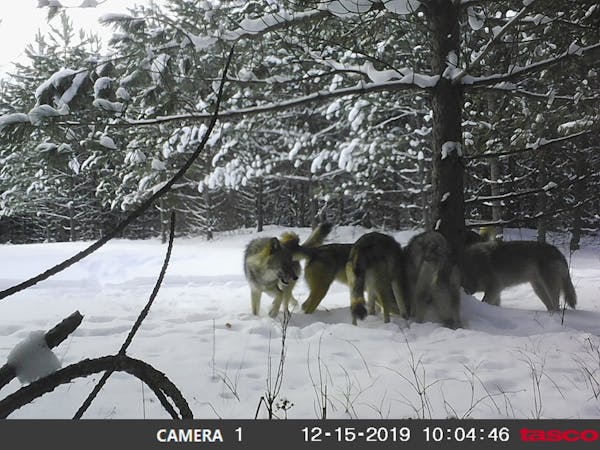The world's largest group of ornithologists announced Nov. 1 that it would begin work renaming 70 to 80 North American bird species named for people — some deemed racist, exclusionary, or implying "ownership of an entire species by one human." The project begins next year.
It's a contentious decision anticipated by the top University of Minnesota ornithologist, who is a fellow in the organization, the American Ornithological Society (AOS), and secretary of its governing council. Little doubt the move reverberated in Minnesota, where avian life is reflected in scientific research and birder life-lists.
"This is probably the most controversial topic that has happened in ornithology definitely and in a lot of biological diversity science in a while," said Sushma Reddy, who is curator of the bird collection at the Bell Museum at the University of Minnesota.
The AOS, a scientific group that maintains the official list of bird names for North and South America, will focus on English common names in the United States and Canada, and expects to produce a list of new names, with the help of the public, sometime in 2025.
In a statement, AOS president Colleen Handel said some current names deflect focus "on the unique features and beauty of the birds themselves."
"There is power in a name, and some English bird names have associations with the past that continue to be exclusionary and harmful today," Handel said.
The group expected the varied reaction on social media — support from scientists and birders, as well as some criticism for "woke birding." There also was ambivalence. Others wondered why the AOS couldn't simply take up individual cases.
David Sibley, author and illustrator of popular guidebooks, had a tempered response on Facebook, but he clearly supported the group's approach.
"Taking names case-by-case would be a quagmire of moral judgment, competing interests, PR campaigns, influence-peddling, and more. Renaming ALL these birds for their appearance, sounds, habitat, etc. is the only viable solution."
Reddy said the AOS decided, "let's not put the emphasis on whether these people are worthy enough to have this honor. Let's put the emphasis on the birds and what we can learn about birds and what we can highlight about their features."
Minnesota scientists' views
Keith Barker, a U professor and bird researcher, said the renaming project shows that the AOS is recognizing how historical structures can affect people.
He said the project is a small part of the organization's mission, which also includes recruiting a larger, more diverse group of young scientists
"In this one aspect where we interface with the public, I think [the renaming project] is a great step," he said.
Change is necessary, agreed Reddy and Barker.
"The arguments are, why is this worth my time? We should be doing other things to foster diversity and inclusion. And the answer is, yeah, we should, we should be doing lots of things. This is one of them," Reddy said. "This is not the only thing that is going to bring people into birding or to care about the natural world at all, but it might be one thing that is really important."
Added Barker: "Why are we naming a bird species about one person in one point in time when these species have lived millions of years in the past? The name is frozen in time. In a sense, it takes a certain degree of arrogance to think we should be naming it after a particular person."
Kristin Hall, Department of Natural Resources Nongame Wildlife Program supervisor, said she respects the initiative but hopes the major effort doesn't come at the expense of protecting birds. The North American bird population has dropped nearly 3 billion birds, or 30%, since 1970, according to a study by the Cornell Lab of Ornithology.
"We just need to make sure, in the end, of results," Hall said. "If it engages new sets of people that find birding the activity they want to engage in and they feel more included because of that, awesome."
Haven't bird names changed over time?
They have. Barker said people have always lumped and split species.
"Our knowledge of bird diversity is always in flux," he said.
There are a few changes each year, Barker said. A recent example in Minnesota is the McCown's longspur, named after a Confederate general. The small prairie bird is now called the thick-billed longspur.
What are examples of birds in Minnesota?
- Easily overlooked is the Henslow's sparrow, which is a mix of tan and buff, with black streaks. The sparrow was named after teacher and botanist John Stevens Henslow by his friend John James Audubon.
- Another sparrow is the LeConte's — "famously elusive," according to the Cornell Lab of Ornithology — named by Audubon for his friend John L. LeConte, an entomologist.
- The Cooper's hawk, which has become more common in urban areas, was named after William Cooper, a naturalist born in 1798 and a founder of what's now the New York Academy of Sciences, according to the American Bird Conservancy.
- Swainson's hawk, named for a British naturalist, is regularly seen in western Minnesota.
- Ross' goose, named after Bernard Ross, a Hudson's Bay Company trader in Canada's Northwest Territories.
- Wilson's warbler, a yellow bird sometimes seen along the Canadian border in summer. The bird was named for ornithologist Alexander Wilson.
What are some local birders saying?
Star Tribune birding columnists Val Cunningham and Jim Williams favor the renaming.
Cunningham said she and some other birders were aware of the possibility but didn't expect an announcement so soon, considering the AOS ultimately will change the names of 152 species of birds.
"I think it is a brilliant move, to toss everything out. … That way you don't have to parse things," Cunningham said, adding that names that are more descriptive of a bird or its range will make it easier for new people to learn.
Williams noted this isn't the first time renaming of birds.
"Before colonization, all of the Native tribes had names for birds," he said, many based on a bird's call or its appearance. "They weren't the same names [from tribe to tribe], but they all had names."
Mike Dockry, a U forestry professor and member of the Potawatomi Nation, said Native voices should be included in science and natural resources management. The AOS said it plans to assemble a diverse renaming group.
"This makes for better science as the Indigenous peoples of this continent have thousands of years of systematic study and relationships with birds and other nonhuman relatives," he said.
Reddy said she is most excited about engaging and educating the public in the coming years.
"I am hopeful we can, in a few years, make these changes, and people won't be batting an eye," Reddy said.
What is the 'House settlement,' and what does it mean for the Gophers and NCAA?

Souhan: Anxiety and depression in the NFL helped inspire Lindsey Young's children's book

Twins lose second in a row to Blue Jays as bullpen falters late

Twins pitcher Ober struggling to regain fastball velocity





